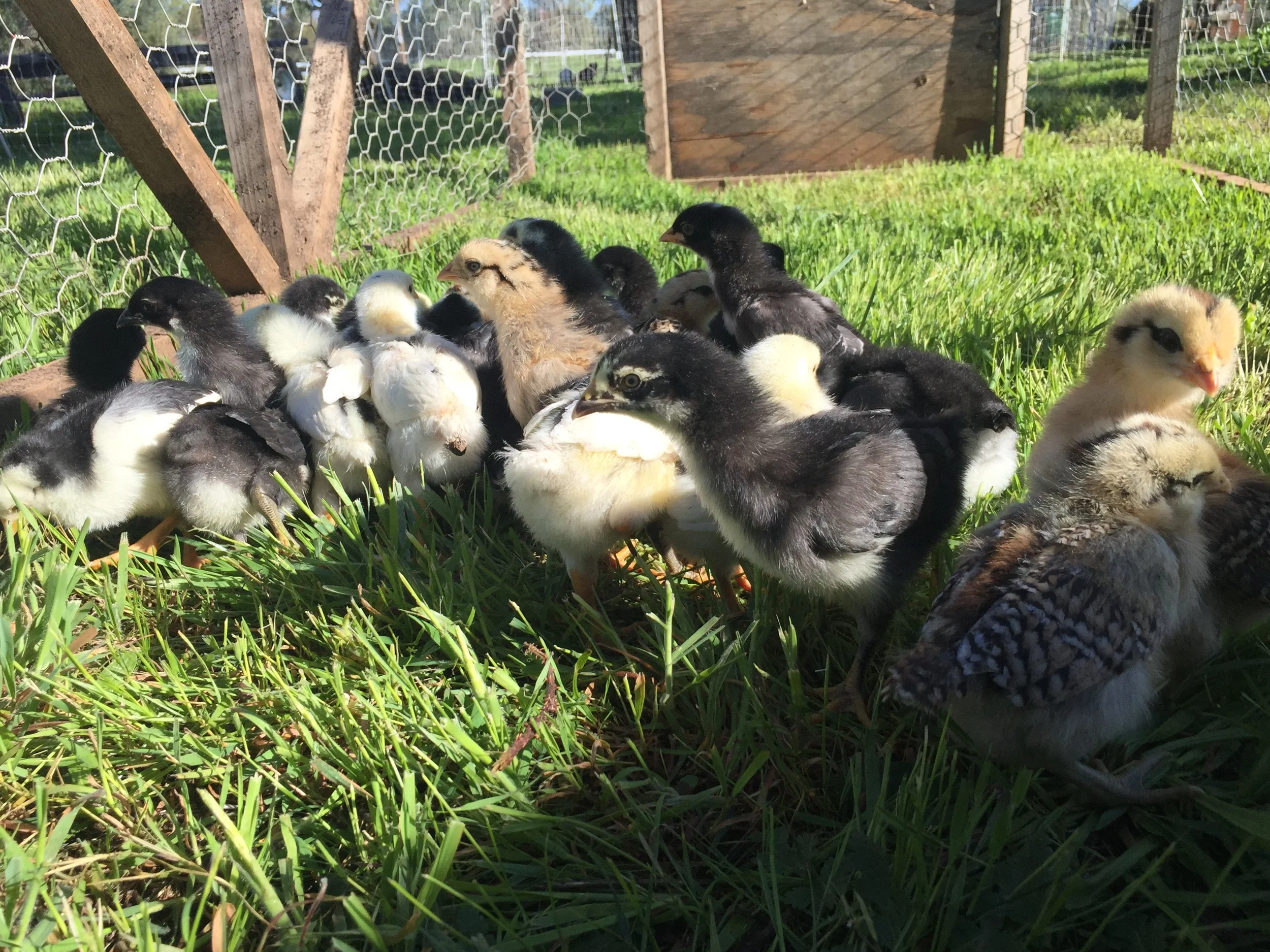Spring
Through living and farming this place at this time, we've come to learn that the seasons don't follow our long held beliefs about when they begin and end. The seasons peak at the Solstices and Equinoxes. Therefore, in the case of the Spring Equinox, March 21, the season is at it's peak. True Spring begins about 45 days prior to March 21; or about the first week in February.

Hello!
A mottled Java chick. Little darling.

Austrian Peas in Spring
Austrian Winter Peas are part of a cover crop seed mix we grow in the winter. The finished compost from this plant and others(Vetch, Cayuse Oats, Fava Beans) is rich in nutriments, looks like horse manure, and smells like honey.

Doggy Joy!
Spring brings back perfect maritme weather much to Bucky's delight! The worn path takes us from the house to the garden, and is (obviously!) an oft-trod way.

Native Wildflowers
This pretty little allium has the unfortunate common-name Blue Dicks. It's obviously deserving of a better name. The American West was explored and colonized by many newcomers from Europe and the eastern US who went about naming mountains, rivers and flowers after dead generals or industrial titans, without any knowledge of this place and its ecolocy. I believe the day will come when people who love the land enough to 'dress and keep it' will begin renaming these beauties with more poetic and deserving names.

Legacy plantings
Oliview Farm is on a property that was once part of the larger, 1,740 acre Alexander Ranch. It was established around 1884 with Olive and fruit trees planted on or about 1887. Through the years the ranch was split up and now there are only a fraction of the original Olive orchards left in production, with many abandoned sections neglected by landowners. Given the age of these trees (some almost 130 years old!), it's a remarkable testament to the resiliency and potential of these trees to shape our local landscape ecology and culture. We are proud stewards of this land and its ancient inhabitants.

The Right Tool
This broad fork was built for Pedro by John Streeby, an artist and metalworker here in Shasta County. The tines are 18 inches long, and it is about 30 in width. It stands 7 feet tall. The right angles at the back of the fork allow for leverage when pulling back. It can get through a bed very quickly!

Spring Hatch
This group of chicks is made up of Mottled Javas (mostly yellow with black markings on their back, and sometimes head), Ameraucanas (some black ones, and some of the more brindled chicks toward the upper right of the photo), and mixed Ameraucana-Maran (black with varied markings). This mix gives us a variety of egg colours and sizes, as well as a variety of behaviours and body sizes. We hatch all of our own chickens in order to preserve these heritage breeds, maintain adaptive capacity to our environment, and to remain independent from the large poultry houses.

A Whole New World
Babies are allowed to live outside after a week or so, and they're certainly ready by that time. We always keep them enclosed, however, and they have a warming light for another 4-6 weeks. Introducing them to greens and bugs early, however, allows them to develop healthy habits for a long life of eating garden greens and orchard bugs.

Cabbage Patch, for Kids AND Adults!
